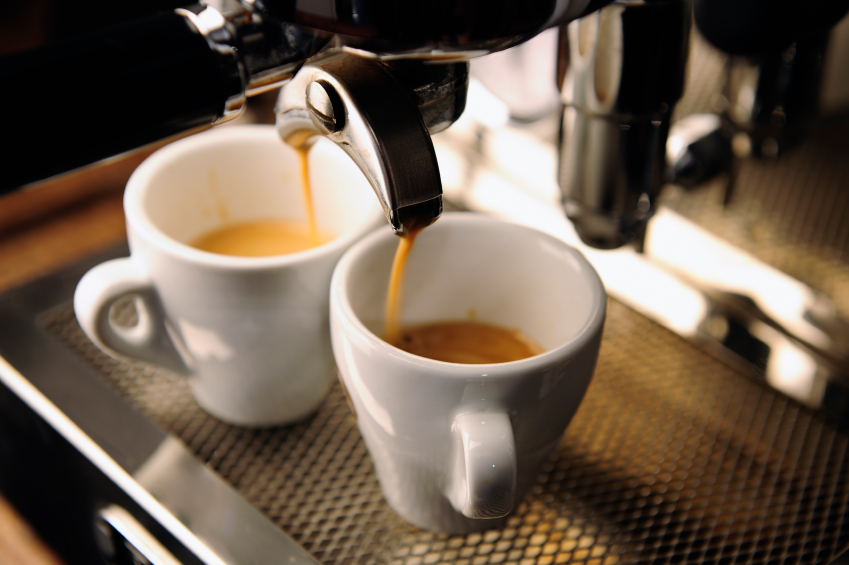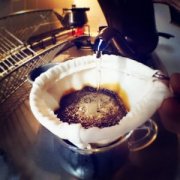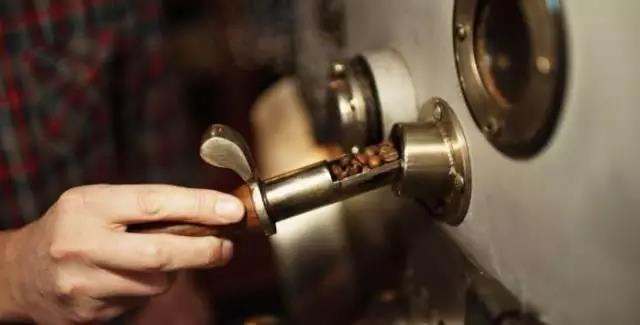Evaluate the standard of espresso and the skills of making espresso

For professional baristas, please follow the coffee workshop (Wechat official account cafe_style)
We often hear customers complain that the coffee is too cold in the coffee shop. Customers walk into the coffee shop to experience the charm of the "third wave" of coffee and expect professional baristas to make them a cup of warm, fragrant coffee, but why do they have the idea that the coffee is too cold?
First, let's take a look at how taste buds work. To put it simply, taste buds can taste special aroma and taste only at a certain temperature. Take ice cream as an example, it is difficult to taste sweet ice cream as soon as you take out the ice cream from the refrigerator; once the ice cream melts in your mouth, the sweetness gradually appears; and once it all melts, the ice cream will be too sweet to swallow.
The modern beverage industry pays little attention to quality and flavor, and pays more attention to the temperature when consumers drink it. I call it the "hot beer phenomenon". In my hometown, there is a kind of malt drink that is very popular. The companies that produce this drink say that their products taste better at low temperatures, so retailers such as bars and supermarkets put the drink in the freezer and print big snowflakes on the refrigerator in order to make consumers feel that the drinks here are cold enough, the colder the better, and soon. The habit of "drinking chilled malt drinks" has gradually taken root and solidified in the hearts of consumers.
As we just said, the lower the temperature, the less sensitive the taste buds (the taste buds are most active between 15 and 50 degrees Celsius), and if you heat the drink to this temperature, you will definitely spit it out. Large coffee chains are also using this tactic. They will add a lot of ice to the hot coffee, and some people even use smoothies, which will further increase the contact area between ice and coffee and make it cool faster.
They do this to cover up the defective taste of coffee, because they use super-cheap, shoddy beans, baristas are not professionally trained, and ice perfectly disguises it. Of course, the quality of this coffee must be very constant, but not always good, but always bad. Second, when the milk is heated to a certain temperature, the sweetness of the milk will be greatly increased. If the temperature exceeds 65 degrees, the lactose of the milk will begin to decompose, and the sweetness and taste of the milk will become worse, so if overheated, the overall taste of the coffee will be affected.
Baristas cannot send milk to the ideal temperature without a certain level of professional baristas. What if you don't add milk? Even without milk, the coffee itself has certain temperature requirements. If the temperature exceeds 93 degrees, the coffee will be charred, the taste will become very bitter, and the coffee will be overextracted. Black coffee, because the extraction temperature is generally between 85 and 93 degrees, so the temperature produced is generally between 60 and 75 degrees. When drinking black coffee, as long as it is not hot, the hotter the better.
As a result, in order to ensure that the defective taste of the coffee is not detected by customers, some coffee chains either make the coffee very cold and add lots of ice cubes, or they cannot control the temperature of the coffee and milk very well, making the taste of the coffee a mess. When these battered customers come into our coffee shop, we have the need and responsibility to tell them at what temperature the coffee should be drunk and how to taste the subtle taste characteristics of the coffee.
So, how do you taste it? Coffee tasting has six steps to describe the aroma, aroma, taste, smell, aftertaste and mellowness of coffee.
1. Fragrance: the first step in tasting is to evaluate the aroma of coffee beans, starting from the sense of smell. First smell the aroma of freshly ground coffee powder, then smell the aroma of coffee after brewing, and compare the difference between the two aromas. Apart from the obvious difference in the smell of coffee, what does this aroma remind you of? is it a plant you've ever smelled? A flower? Trees? Dirt? Let your thoughts run wild and gallop at will.
The characteristics of the aroma indicate the essence of the taste of coffee beans: the sweet smell indicates that its taste is sour; the pungent smell indicates that its taste is irritating. The strength of the aroma indicates the freshness of the coffee, that is, the time it takes from roasting to grinding into powder.
The aroma consists of the most volatile aromatic compounds, especially those containing sulfur, such as methyl mercaptan. At present, there is little people can do about how to keep these substances in coffee beans.
two。 Aroma: the gas released by the heat of caffeine hot water is inhaled into the nasal cavity, making the nasal diaphragm feel a comprehensive fragrance: from fruit to grass to nutty. The experience of tasting will cause the tasters to classify coffee according to the memory of various coffee smells. In the future, different kinds of coffee can be distinguished according to different odors.
Generally speaking, the aroma characteristics of coffee are related to the origin of coffee. Correspondingly, the strength of the aroma is related to the freshness of coffee. Freshness is measured by the length of time from baking to cooking. Freshness is also affected by the type of packaging that protects coffee from dampness and non-oxidation.
3. Taste (Taste): carefully savoring the taste of freshly brewed coffee is the third step in tasting coffee. Feel the feeling in the mouth, that is to say, whether the heavy feeling of coffee in the mouth is obvious. Body: the taste of coffee liquid. The tongue slips gently across the palate of the mouth to feel the texture of the coffee. The feeling of oily quality and smoothness can measure the fat content of coffee water, while the feeling of "weight", thickness and stickiness of coffee can measure the fiber and protein content of coffee. The two make up the mellowness of coffee.
Quickly inhale coffee and distribute it evenly on the surface of the tongue. All sensory nerve terminals respond to sweet, salty, sour and bitter tastes at the same time. Because temperature affects the degree of stimulation, paying attention to responses in different sensitive areas of the tongue can help capture different characteristics. For example, because temperature reduces sensitivity to the sweetness of sugar, acidic coffee initially produces a tingling on the tip of the tongue rather than sweetness. Hold the coffee in your mouth for 3-5 seconds and focus on the type and intensity of the taste. In this way, primary and secondary flavor characteristics can be evaluated.
4. Nose: the fourth step is the same as the third step. Inhale coffee through the surface of the tongue. Due to the change of water vapor pressure, part of the organic matter in the water changes from liquid to gaseous state. The act of sucking coffee hard causes the gas to enter the nasal cavity, allowing the tasters to analyze the smell of the coffee.
At the same time, evaluate the taste and smell of coffee, so that tasters feel the unique taste (flavor) characteristics of coffee. Standard roasted coffee usually has the taste of caramelized products, while deep-roasted coffee usually has the taste of dry distillation products.
5. Aftertaste (Aftertaste): the fifth step is to put the coffee in your mouth for a few seconds, then swallow a small part. Quickly suck the throat to send the water vapor left in the back palate into the nasal cavity, you can find the smell of the heavier molecules left in the back palate. Feel the richness of black coffee. The so-called richness generally refers to the taste association of coffee in your mouth, because the taste of coffee is easily reminiscent of citrus, lemon, pulp, fermentation, Steamed Pork Dumplings, dried fruit, soil, grass, flowers, honey and so on.
The aromas of various compounds felt in the aftertaste are sweet, similar to chocolate; or bonfire smoke, or cigar smoke; sometimes, there are similar irritating spices, such as cloves; sometimes, like resin, similar to turpentine; sometimes, there are all these smells.
6. The last point to taste is Huigan. The so-called Huigan refers to the aftertaste of coffee in the mouth and throat.
If possible, it's best to try several different coffees at a time. The advantage of this is that you can deepen your feelings about the different flavors of various coffees through comparison and train your taste buds. All samples are treated the same so that there is comparability between samples. Calm down and enjoy the process. The more experience you taste, the more acutely you feel the taste of coffee. It starts with coffee from three major coffee producing areas, and each famous premium coffee has its own unique flavor.
Important Notice :
前街咖啡 FrontStreet Coffee has moved to new addredd:
FrontStreet Coffee Address: 315,Donghua East Road,GuangZhou
Tel:020 38364473
- Prev

The reason why tap water or mineral water is generally not used for brewing coffee.
Communication of professional baristas Please pay attention to the coffee workshop (Wechat official account cafe_style) about 98% or 99% of a cup of coffee is water. Like making wine and making tea, only good water quality can show the aroma of coffee. Mineral water is hard water containing minerals, which hinders the release of caffeine and tannin, reducing the taste of coffee. The best way to make coffee is to boil it on a gas stove.
- Next

Professional coffee roasting | how to bake coffee with delicate flavor?
Exchange of professional baristas please follow the coffee workshop (Wechat official account cafe_style) to write this topic, not to announce that I can do it personally, but to uphold the principles of be humble and open mind, once again review the master's argument, and at the same time find some phenomena that I have observed and corroborate each other. Main quote: The Flick created by Scott Ra
Related
- Beginners will see the "Coffee pull flower" guide!
- What is the difference between ice blog purified milk and ordinary milk coffee?
- Why is the Philippines the largest producer of crops in Liberia?
- For coffee extraction, should the fine powder be retained?
- How does extracted espresso fill pressed powder? How much strength does it take to press the powder?
- How to make jasmine cold extract coffee? Is the jasmine + latte good?
- Will this little toy really make the coffee taste better? How does Lily Drip affect coffee extraction?
- Will the action of slapping the filter cup also affect coffee extraction?
- What's the difference between powder-to-water ratio and powder-to-liquid ratio?
- What is the Ethiopian local species? What does it have to do with Heirloom native species?

